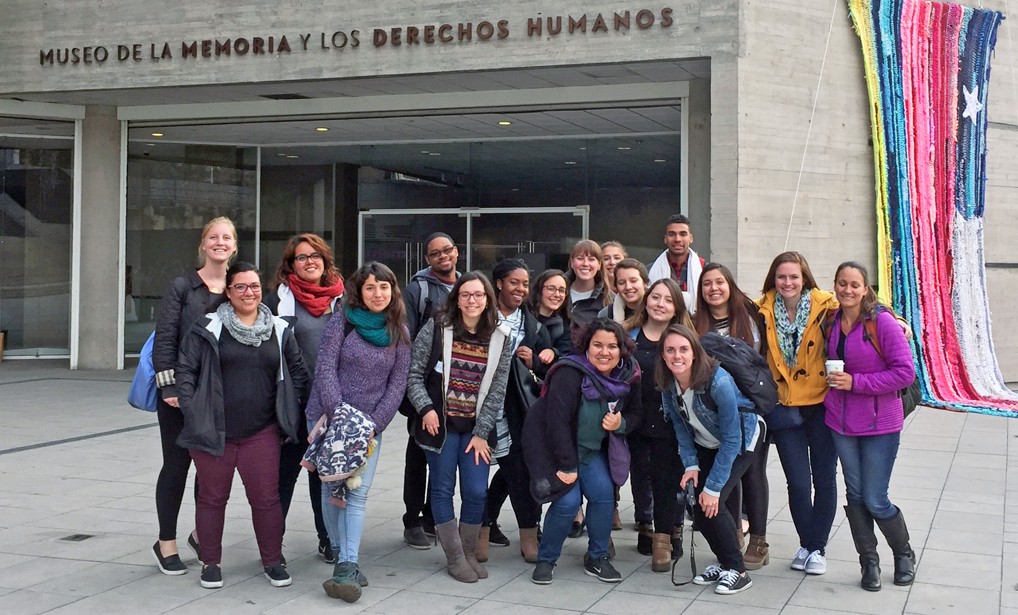
The cohort gathers in front of the Museum of Memory and Human Rights in Santiago, Chile.
This summer, 20 students from the Boston College School of Social Work and the Pontifica Universidad Catόlica de Chile (UC) convened in Santiago, Chile for a novel course on community development.
Community Development for Innovation: The Chilean Contextfocused on deepening its students’ understandings of the tools and strategies needed to effectively launch innovative practices within various aspects of program development. And by doing this work against the backdrop of the current social innovation environment in Chile, students also learned to implement culturally relevant contextual analysis into the task of mobilizing community members to innovate.
“The trip to Chile exceeded expectations,” said Stephanie Berzin, Co-Director for the Center for Social Innovation at BCSSW, and the lead professor on the course. “Our students shined as they connected to the culture, collaborated with the PUC students, and worked to help change the lives of youth in the city through field work and consultation with local agencies.”
“This course is really about integrating two cultures and their differing points of view towards finding a solution to a complex problem,” added Chabeli Nadal, Assistant Director of the International Doctoral Program, who co-taught the course. “It’s designed to push the students to explore their own beliefs, biases, and culture in order to better understand new communities. The hope is that, in the end, this will help to build budding social workers who are better equipped to serve our increasingly diverse societies.”
The specific project taken on by the team from BCSSW and UC centered around the growing population of NiNis in Chile’s capital city, a term that refers to young Chileans in Santiago who are neither pursuing opportunities in higher education, nor at work (ni estudia, ni trabaja in Spanish). Local agencies worked directly with the BC and UC cohort, including: the Fundación San Carlos de Maipo, Liceo 110 José María Caro, Centro Yunus, Crea Equidad, and Corporación Moviliza. The group was tasked with three major assignments: to learn who the NiNis are, figure out ways to locate them, and then develop potential interventions to help them to make positive decisions about their futures. The group is in the process of filing a final report with recommendations. A couple of the recommendations that will be addressed in more detail include:
- Vis-à-vis learning who the NiNis are and locating them: Hire community organizers to enter prisons, plazas, and skateparks to build relationships with NiNis.
- With regards to intervention: Change the support system for teachers and administrators, to better engage youth and gain their participation in the Communities That Care model, through more focused intervention.
While the project itself was eye-opening, students from both Santiago and Boston said that perhaps the most enlightening moments during class took place through conversations with their colleagues from the other side of the Equator.
“One of the most enriching aspects of the course was that we were able to learn how social work functions in Chile, within the midst of an existing organization,” said rising 2nd year Boston College MSW student Bridget Miller. “It was eye-opening to see how the field aligns with, and differs from, what we experience here in the United States.”
“I believe the experience of working with the BC students was profoundly enriching for me, it helped me to see things from a different perspective,” added UC student Danae Fuenes Calderon. “I believe that in contrast to Chileans, they were able to focus on finding solutions when we see ourselves as being overwhelmed by the problem.
“I believe the most important lesson from this experience is that we should always look farther than the barriers which we make for ourselves, there are always solutions, there is always hope, we only need to open our eyes a little.”

